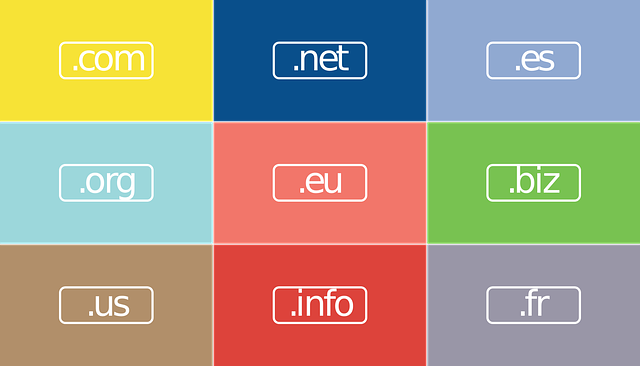Domain Flipping: Turn Domains into Cash
Introduction
In the digital age, where the internet is the backbone of commerce, communication, and content, domain names have become valuable assets. Just like real estate, prime digital locations—domain names—can be bought, sold, and traded for profit. This practice, known as domain flipping, has turned into a lucrative business for many entrepreneurs. Whether you’re a seasoned investor or a beginner looking to break into the world of domain flipping, this playbook will guide you through the process of turning domains into cash.
Table of Contents
Chapter 1: Understanding Domain Flipping
What is Domain Flipping?
Domain flipping is the practice of buying domain names with the intention of selling them at a higher price. The concept is similar to flipping houses: you purchase a property (in this case, a domain name), improve its value (through branding, SEO, or other strategies), and then sell it for a profit.
Why Domain Flipping?
- Low Entry Barrier: Unlike real estate or stock market investments, domain flipping requires relatively low capital to get started.
- High ROI Potential: A well-chosen domain can be sold for thousands, if not millions, of dollars.
- Passive Income: Once you own a domain, it requires minimal maintenance, making it a source of passive income.
- Global Market: The internet is global, meaning your potential buyers can come from anywhere in the world.
The Domain Flipping Ecosystem
- Domain Registrars: Companies like GoDaddy, Namecheap, and Google Domains where you can register new domain names.
- Domain Marketplaces: Platforms like Sedo, Flippa, and Afternic where you can buy and sell domains.
- Domain Appraisals: Services that estimate the value of a domain based on various factors like length, keywords, and market demand.
- Domain Investors: Individuals or companies that specialize in buying and selling domains for profit.
Chapter 2: Getting Started with Domain Flipping
Step 1: Research and Education
Before diving into domain flipping, it’s crucial to educate yourself about the industry. Read blogs, join forums, and follow industry leaders to stay updated on trends and best practices.
Step 2: Setting a Budget
Determine how much you’re willing to invest initially. Remember, domain flipping is a business, and like any business, it requires capital. Start small, and as you gain experience and confidence, you can scale up.
Step 3: Choosing a Niche
Focusing on a specific niche can increase your chances of success. Popular niches include technology, health, finance, and real estate. By specializing, you can become an expert in that area, making it easier to identify valuable domains.
Step 4: Tools of the Trade
- Domain Name Generators: Tools like LeanDomainSearch and NameMesh can help you brainstorm domain ideas.
- Keyword Research Tools: Google Keyword Planner and SEMrush can help you identify high-traffic keywords that can be incorporated into domain names.
- Domain Appraisal Tools: EstiBot and GoDaddy Appraisals can give you an estimate of a domain’s value.
- Marketplace Accounts: Create accounts on popular domain marketplaces to buy and sell domains.
Chapter 3: Finding Valuable Domains
What Makes a Domain Valuable?
- Short and Memorable: Short domains are easier to remember and type, making them more valuable.
- Keyword-Rich: Domains that include popular keywords related to a specific industry are more likely to attract buyers.
- Brandable: Unique, catchy names that can be easily branded are highly sought after.
- Extension: While .com is the most popular and valuable extension, other extensions like .net, .org, and country-specific extensions can also be valuable.
Where to Find Valuable Domains
- Expired Domains: Domains that have expired and are no longer renewed by their previous owners can be gold mines. Use tools like ExpiredDomains.net to find them.
- Auction Sites: Websites like GoDaddy Auctions and NameJet list domains that are up for auction.
- Social Media and Forums: Sometimes, domain owners sell their domains directly through social media platforms or forums.
- Domain Generators: Use domain name generators to come up with unique, available domain names.
Evaluating a Domain’s Potential
- Traffic: Check the domain’s traffic using tools like SimilarWeb or Alexa. High traffic domains are more valuable.
- Backlinks: Use tools like Ahrefs or Moz to check the domain’s backlink profile. Domains with high-quality backlinks are more valuable.
- Search Engine Rankings: Domains that rank well for specific keywords are more attractive to buyers.
- Historical Data: Check the domain’s history using the Wayback Machine to ensure it hasn’t been used for spam or illegal activities.
Chapter 4: Buying Domains
Negotiating the Purchase
- Do Your Homework: Research the domain’s value and be prepared to justify your offer.
- Start Low: Begin with a lower offer than you’re willing to pay, leaving room for negotiation.
- Be Polite and Professional: Building a good relationship with the seller can lead to better deals.
- Use Escrow Services: For high-value domains, use an escrow service to ensure a secure transaction.
Financing Your Purchase
- Self-Funding: Use your own savings to purchase domains.
- Partnerships: Partner with other investors to pool resources and share profits.
- Domain Financing: Some marketplaces offer financing options for high-value domains.
Legal Considerations
- Trademark Issues: Ensure the domain doesn’t infringe on any trademarks to avoid legal disputes.
- Contracts: Draft a clear contract outlining the terms of the sale, including payment terms and transfer of ownership.
Chapter 5: Adding Value to Your Domains
Developing a Basic Website
A domain with a basic website or landing page is more attractive to buyers. It shows that the domain is being used and can generate traffic.
SEO Optimization
Optimize the domain for search engines by incorporating relevant keywords, creating quality content, and building backlinks.
Building an Email List
If the domain attracts traffic, consider building an email list. A domain with an established email list is more valuable to buyers.
Social Media Presence
Create social media profiles associated with the domain. A strong social media presence can increase the domain’s value.
Monetization Strategies
- Affiliate Marketing: Use the domain to promote affiliate products and earn commissions.
- Ad Revenue: Place ads on the domain’s website to generate income.
- E-commerce: Set up an online store to sell products or services.
Chapter 6: Selling Your Domains
Pricing Your Domain
- Appraisal Tools: Use domain appraisal tools to get an estimate of your domain’s value.
- Market Research: Research similar domains that have been sold recently to gauge the market value.
- Negotiation: Be prepared to negotiate with buyers to reach a fair price.
Listing Your Domain
- Domain Marketplaces: List your domain on popular marketplaces like Sedo, Flippa, and Afternic.
- Social Media and Forums: Promote your domain on social media platforms and forums.
- Email Marketing: Reach out to potential buyers directly via email.
Closing the Deal
- Escrow Services: Use an escrow service to ensure a secure transaction.
- Transfer of Ownership: Follow the registrar’s process to transfer the domain to the buyer.
- Payment: Ensure you receive payment before transferring the domain.
Post-Sale Considerations
- Customer Feedback: Ask for feedback from the buyer to improve your future sales.
- Taxes: Consult with a tax professional to understand the tax implications of your domain sales.
- Reinvestment: Reinvest your profits into new domains to continue growing your business.
Chapter 7: Advanced Domain Flipping Strategies
Domain Parking
Domain parking involves placing ads on a domain’s landing page to generate income while you wait for a buyer. This can be a good way to monetize domains that are not immediately sold.
Domain Leasing
Instead of selling a domain outright, consider leasing it to a buyer. This can provide a steady stream of income while retaining ownership of the domain.
Domain Portfolio Management
As your domain portfolio grows, it’s essential to manage it effectively. Use tools like DomainManager or Excel to keep track of your domains, their purchase prices, and potential selling prices.
Networking and Partnerships
Building relationships with other domain investors can lead to valuable partnerships and opportunities. Attend industry conferences, join online communities, and collaborate with other investors.
Staying Ahead of Trends
The domain market is constantly evolving. Stay ahead of trends by following industry news, attending webinars, and continuously educating yourself.
Chapter 8: Common Mistakes to Avoid
Overpaying for Domains
One of the most common mistakes is overpaying for a domain. Always do your research and use appraisal tools to ensure you’re paying a fair price.
Ignoring Legal Issues
Failing to check for trademark issues or other legal problems can lead to costly disputes. Always conduct thorough due diligence before purchasing a domain.
Neglecting SEO
A domain with poor SEO is less attractive to buyers. Invest time in optimizing your domain for search engines to increase its value.
Failing to Market Effectively
Even the most valuable domain won’t sell if no one knows about it. Invest in marketing and promotion to reach potential buyers.
Impatience
Domain flipping is not a get-rich-quick scheme. It requires patience, persistence, and a long-term perspective. Don’t expect to make a profit overnight.
Chapter 9: Success Stories in Domain Flipping
Case Study 1: Voice.com
In 2019, the domain Voice.com was sold for a staggering $30 million. The domain was purchased by Block.one, a blockchain software company, to launch a new social media platform. This sale is a testament to the potential value of premium, brandable domains.
Case Study 2: Insurance.com
Insurance.com was sold for $35.6 million in 2010, making it one of the most expensive domain sales in history. The domain was purchased by QuinStreet, a leading online marketing company, to strengthen its presence in the insurance industry.
Case Study 3: VacationRentals.com
In 2007, VacationRentals.com was sold for $35 million to HomeAway, a vacation rental marketplace. The domain was a perfect fit for HomeAway’s business model, demonstrating the importance of choosing domains that align with a company’s brand and industry.
Chapter 10: The Future of Domain Flipping
Emerging Trends
- New Domain Extensions: With the introduction of new domain extensions like .ai, .io, and .app, there are more opportunities for domain investors to find valuable names.
- Blockchain Domains: Blockchain-based domains like .crypto and .zil are gaining popularity, offering new opportunities for investors.
- AI and Automation: AI-powered tools are making it easier to identify valuable domains, automate bidding, and optimize SEO.
The Role of Technology
Advancements in technology are transforming the domain flipping industry. From AI-driven domain appraisals to blockchain-based domain ownership, technology is making it easier and more efficient to buy, sell, and manage domains.
The Importance of Branding
As the internet becomes more crowded, branding will play an increasingly important role in domain flipping. Domains that are unique, memorable, and align with a company’s brand will continue to be in high demand.
The Global Market
The internet is a global marketplace, and domain flipping is no exception. As more businesses go online, the demand for premium domains will continue to grow, offering opportunities for investors worldwide.
Conclusion
Domain flipping is a dynamic and potentially lucrative business that offers endless opportunities for those willing to put in the time and effort. By following the strategies outlined in this playbook, you can turn domains into cash and build a successful domain flipping business. Remember, success in domain flipping requires a combination of research, patience, and persistence. Stay informed, stay focused, and most importantly, stay ahead of the curve. Happy flipping!


